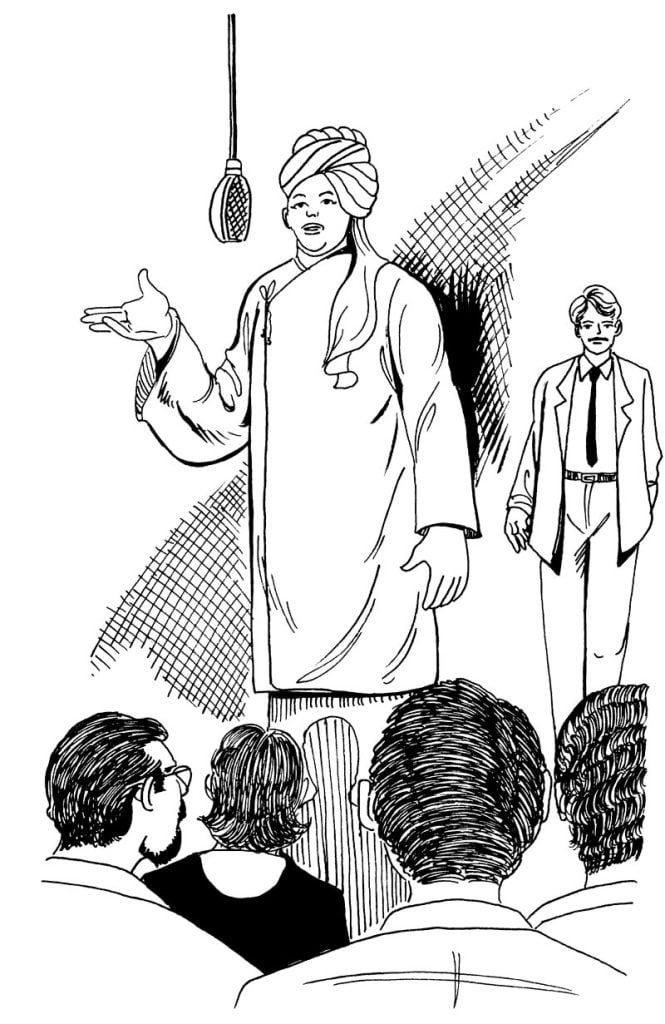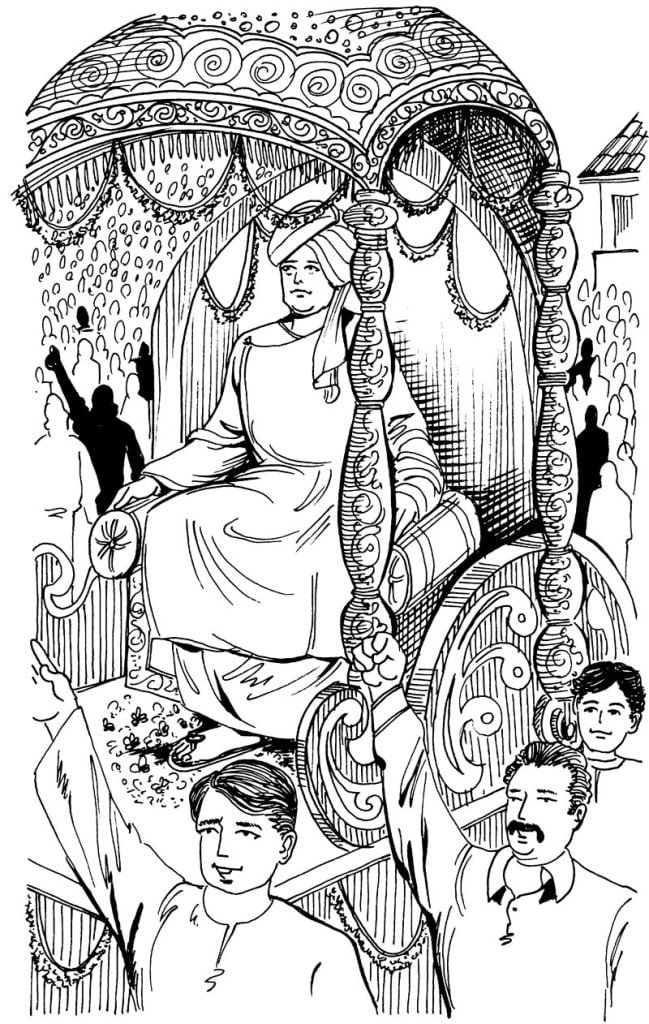Swami Vivekananda returned to India on 27th January, 1897 after his spiritual conquest of the west. Welcome processions and receptions followed. Swamiji thanked his admirers, followers and supporters. In Madras he delivered a speech called ‘My War Plan’.
He said, “Youngmen of India! The future of the country depends on you. Come forward and I will give you the plan for upliftment and the progress of the nation. I need one thousand youngmen ready to dedicate their lives to the service of the country. Soon we shall set up ‘Ramakrishna Mission’ which will serve as a vehicle to carry forward our campaign. I urge the youth to join the Mission and make it a successful endeavour.”

On 15th Feb. 1897, Swamiji reached Calcutta. He was taken in a procession on horse carriage though the main roads. Mother Bhuvaneshwari Devi saw her son being celebrated with pride in her heart and tears of joy in her eyes.
On 1st May, 1897, in a formal meeting ‘Ramakrishna Mission’ was established. Two years later a foreign disciple bought land in Belur village and Belur monastery came up which became the headquarter of the Mission. His British disciple Miss Margret Nobel came to India and dedicated her life to the service of the Mission. In due course, the Mission set up its branches all over India. It main functions were providing medical and social services to the needy and propagating Sanatan Dharma on the lines of the interpretations made by Swami Vivekananda.
Working for the Mission on practical level taught Swamiji bitter lesson and truths about India. He would often lament, “Why our country wants to be a beggar for ever? Why youth of our country don’t come forward to work for the country? The people know how they are being manipulated by the vested interests but they don’t do anything about it. At least educated youth can see it for themselves. But they don’t show any spirit of sacrifice and dedication. What tragedy!”
In comparison, the Mission’s foreign branches were doing well. In 1899, Swamiji again went abroad to take stock of the work of the Missions there. He met his old friends, followers and well wishers. Some of his old friends had passed away. It saddened him.
In the past six or seven years Swamiji had worked ceaselessly which was telling upon his health. He was suffering from asthma and diabetes. In some way he knew that his own end was approaching fast.
After 18 months of hectic tour of USA and Europe he returned to Belur Monastery on the night of 1st Dec., 1900. He talked excitedly about his tour, experiences interpersed with funny stories and anecdotes. Swamiji was very tired and feeling sick. On the advice of the inmates of the monastery, he went to Himalayas to take a break. His destination was ashram set up by Sabiors there.
The Final Days
The Sabior Ashram was 65 miles off the nearest railway station, the distance he travelled on foot.
Mr. Sabior had passed away. When Swamiji saw the motherly figure of Mrs. Sabiour he could not help crying. They met like mother and son and comforted and consoled each other.
Swamiji’s stay at the ashram became a news. He was too famous to be left alone. The people started going to the ashram to meet him and letters also poured in. He could not remain inactive. Swamiji started the publication of ‘Prabhudh Bharat’ (Erudite India), a periodical from there. Due to work overload, his health deteriorated alarmingly as the cold winter set in.

He was at once shifted to Belur monastery. When his condition stabilised and the winter ended Swamiji took his mother on a pilgrimage, to fulfil his promise given to her. The journey was broken at Dacca where he was to meet his followers. He had a large number of them there. Unfortunately he again fell ill and had be brought back to Belur.
He was always worried about the progress of the Mission which was falling short of his expectations and goals. In 1902 famous Japanese scholar Mr. Okakura came to meet him. He was the chief of the Mission branches in Japan. The two paid a visit to Bodh-Gaya.
His health against worsened after his return to Belur. He was bedridden when Ramakrishna Paramhansa’s birth anniversary was organised at grand scale. Swamiji viewed the festivities from his window.
His favourite German disciple, Nivedita hovered around him. She used to calm him down when he got agitated at the inaction and the apathy of his countrymen.
On 4th July, 1902 he summoned the inmates of the monastery to declare, “Today is 4th July, the Independence day of America, I too wish to be liberated, released.”
He said to Nivedita, “You have done us a great favour by leaving your country to serve the poor and sick of this country. I am grateful to you. I hope you will continue to be generous to us.”
He got all windows and doors opened and with his eyes closed crooned, “Let’s go home, dear heart”.
At lunch, Swamiji served food to the inmates and helped them wash their hands saying, “Remember, Jesus had washed the feet of his disciples.”
It shocked his followers. They knew that Jesus had done that on the last day of his life.
After the evening prayers, Swamiji entered his room and stood by the window to look at Dakshineshwara that held so many of his memories which his mind replayed.
Swamiji sat down in lotus position to meditate.
Nivedita and a brother opened the door after a while to find Swamiji lying on bed reciting some mantra. They turned him into more comfortable position. Swami Vivekananda’s lips quivered, with a child like whimper his head lolled to one side.
Swami Vivekananda, had passed away at the young age of 39, on the night of 4th July, 1902. He had joined his guru Paramhansa to continue their dance of devotional joy on the clouds of the heavens yonder.
